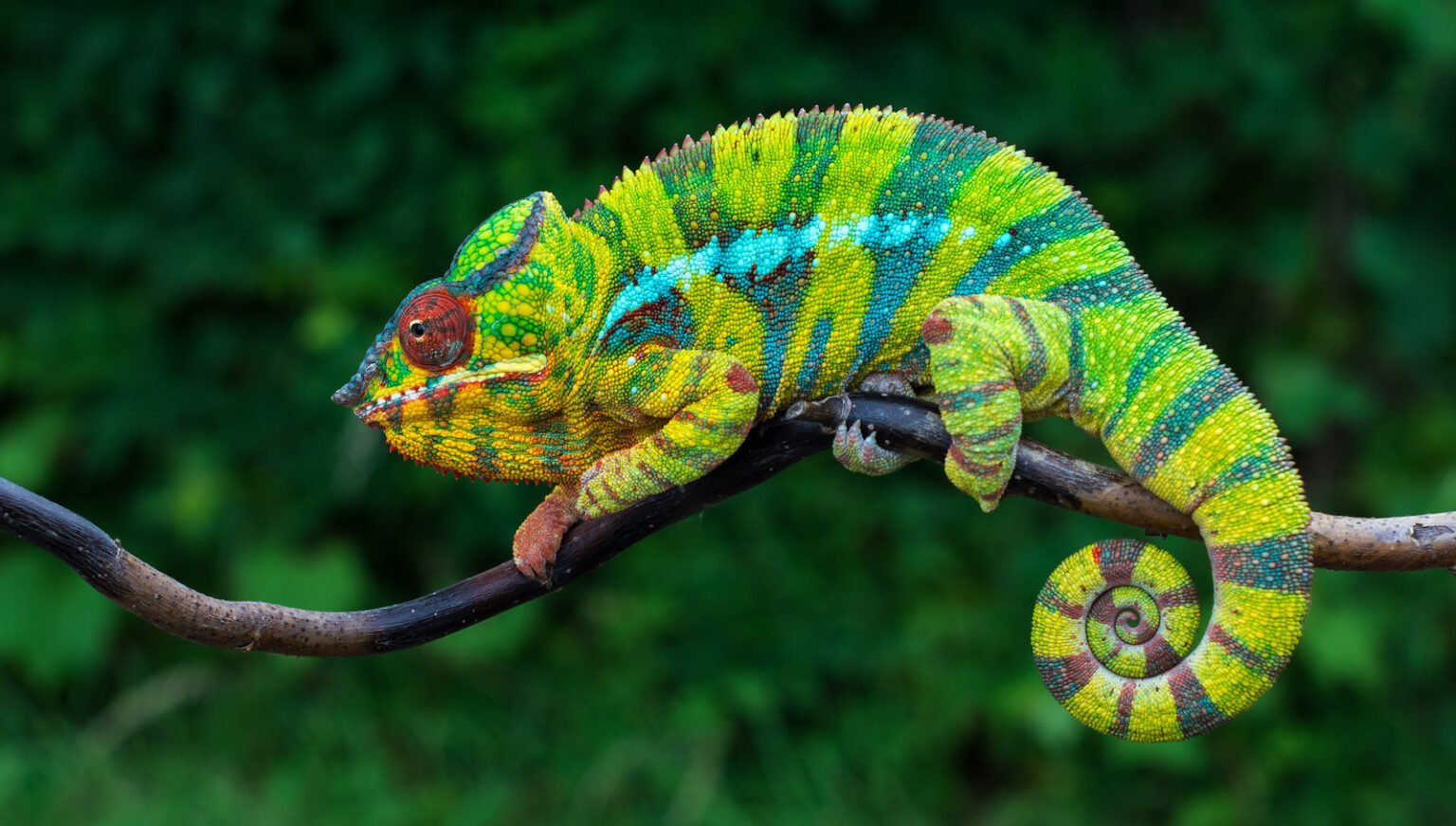
With their independently moving eyes, projectile tongues, and ever-shifting colors, chameleons seem almost like creatures from another world. But these remarkable reptiles are very real—and they’re full of surprises.
What Is a Chameleon?
Chameleons are a family of lizards known for their unique physical traits and behaviors. There are over 200 species, most of which live in Africa and Madagascar, though some are found in southern Europe, the Middle East, and parts of Asia. They inhabit a range of environments, from rainforests to deserts.
Color Changing: Not Just for Camouflage
Chameleons are famous for their ability to change color—but it’s a myth that they do it only to blend into their surroundings. While camouflage is one reason, chameleons also shift hues to regulate body temperature, communicate with other chameleons, and display mood or stress.
Color change is made possible by special cells in their skin called iridophores, which contain nanocrystals. By altering the spacing of these crystals, chameleons can reflect different wavelengths of light—producing vivid blues, greens, reds, and yellows.
Eyes Like No Other
One of the most mesmerizing features of a chameleon is its eyes. Each eye can move independently, giving the lizard a full 360-degree field of vision without moving its head. When it locks onto prey, both eyes focus forward for pinpoint accuracy.
The Tongue Strike
A chameleon’s tongue can be as long as its body—and it launches like a high-speed projectile to catch insects and other small prey. The tip of the tongue is sticky and forms a suction cup-like grip, which helps ensure their meal doesn’t escape.
Claws, Tails, and Tree Life
Most chameleons are arboreal, meaning they live in trees. Their zygodactylous feet (two toes forward, two back) and prehensile tails allow them to grip tightly onto branches and navigate their vertical world with agility. They move slowly and deliberately, often rocking back and forth to mimic the movement of leaves in the wind.
Conservation and Threats
Some chameleon species are abundant, while others are highly endangered due to habitat loss, climate change, and the illegal pet trade. Madagascar, home to about half of all known species, is especially critical for chameleon conservation.
Final Thoughts
Chameleons aren’t just color-changing curiosities—they’re masterfully adapted animals with a suite of specialized tools for survival. Their evolutionary quirks make them one of the most unique groups of reptiles on Earth, and a reminder of the dazzling diversity of life.
More photos below ↓





































Disclaimer: This blog post is for edutainment purposes only and may not be entirely accurate.






